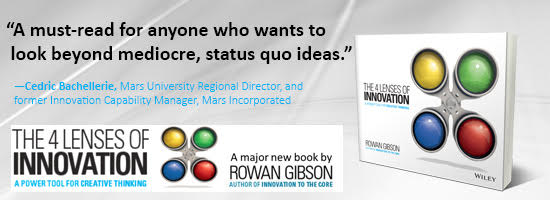Innovation Lessons from Michelangelo

Michelangelo wasn’t a one-trick pony or a one-hit wonder. He was the archetype Renaissance artist, accomplished as a sculptor, painter, architect, and poet. Michelangelo produced iconic works, across disciplines, throughout the 88 years of his life.
Many of Michelangelo’s works are still among the world’s most recognized and appreciated art ever created, five hundred years later, including the Pieta, David, and Sistine Chapel.
It’s hard to argue that Michelangelo wasn’t a genius and that he didn’t leverage his creative superpower to gain the right notoriety and sponsorships. It doesn’t hurt when Lorenzo de’ Medici invites you to live in his Florence palace! But something else is going on when Michelangelo sustains his production at such an amazingly high level across so many disciplines over almost a century.
Michelangelo shared his secret on the celebration of his 87th birthday, just a year before he died, proclaiming, Ancora Imparo: Yet I Am Learning.
Michelangelo gave us incredible works of art but he also gave us the most important innovation insight and lesson. In a rapidly changing world, learning and reinvention are the most important life skills. Not just when we’re young but throughout our lives.
Learning curve matters above all else. Michelangelo is my new innovation hero and Ancora Imparo is my new innovation mantra.
Innovators thrive on the steepest part of the learning curve where the changing rate of learning is the greatest. Watch how innovators, like Michelangelo, manage their careers and lives. They always put themselves on a steep learning curve. I know I always have.
Staying on a steep learning curve is the most important decision criterion for any career choice an innovator makes. Along the way, innovators make many career moves, none of which are primarily about titles, offices, number of direct reports, or money. Innovators believe those things are more likely to happen if they keep themselves on steep learning curves. Every choice to take a new tack or direction is about the next learning curve.
Innovators are self aware enough to know they do their best work while learning at a rapid rate and are bored to tears when they aren’t. Steep learning curves matter most.
I have known many people who sacrificed learning curves for money and other extrinsic rewards, and in the long run most ended up unhappy. In my experience, innovators who follow their instincts and are in it for the learning always end up happier and making more money anyway.
Innovators always intuitively know when to leap from one learning curve to the next. They get restless when any curve starts to flatten out. Instead of enjoying the flat part of the curve where it takes less effort to produce more output, innovators get bored and want to find new learning curves where they can benefit from a rapidly changing rate of learning. If the goal for innovators is to get better faster, the only way to accomplish it is to live on the edge where the knowledge flows are the richest. It isn’t the most comfortable place to be.
It’s understandable why most people only suffer the pain of the steep part of the learning curve, not for the kick of learning, but to finally reach the flat part of the curve. Once arriving it’s easy to plant a flag, claim victory, and to camp there with no sense of urgency to move to another curve once the plateau is reached. It is comfortable on the flat part of the curve where the workload lessens and rewards are only available to those that have paid their dues and put in the time to scale the curve.
Yet innovators seem to extract what they need from the steep part of the curve and leap off to do it again, moving on to the steep part of the next curve just when the effort required to further climb the current curve gets easier.
Innovators are less interested in squeezing marginal value from continuing to scale existing learning curves than finding the next learning curve to climb. They take what they have learned from each curve and cross-pollinate other curves with their interdisciplinary experiences. Think Michelangelo. Innovators are disruptive to those who think they can continue to hang on to a single learning curve throughout their careers and lives. Ideas from each learning curve are combined and recombined to create amazing art, new ways to deliver value, and to solve the most important problems we face.
Staying on a learning curve as the rate of learning slows down is no way to stay relevant in a rapidly changing world. It won’t work for people, organizations, or communities. We are all vulnerable to being disrupted and far too many of our fellow citizens already have been. We would all do well to take an innovation lesson from Michelangelo.
Ancora Imparo, Yet I Am Learning, is the new innovation mantra. Optimize for learning. Always.
image credit:Â britannica.com

Wait! Before you go…
Choose how you want the latest innovation content delivered to you:
- Daily — RSS Feed — Email — Twitter — Facebook — Linkedin Today
- Weekly — Email Newsletter — Free Magazine — Linkedin Group
Saul Kaplan is the Founder & Chief Catalyst at the Business Innovation Factory. He is the author of The Business Model Innovation Factory. Follow Saul and his work @TheBIF
is the Founder & Chief Catalyst at the Business Innovation Factory. He is the author of The Business Model Innovation Factory. Follow Saul and his work @TheBIF
NEVER MISS ANOTHER NEWSLETTER!
LATEST BLOGS
Three things you didn’t know about credit cards
Photo by Ales Nesetril on Unsplash Many of us use credit cards regularly. From using them for everyday purchases to…
Read MoreFive CV skills of a business-minded individual
Photo by Scott Graham on Unsplash The skills listed on a CV help employers quickly understand your suitability for a…
Read More

